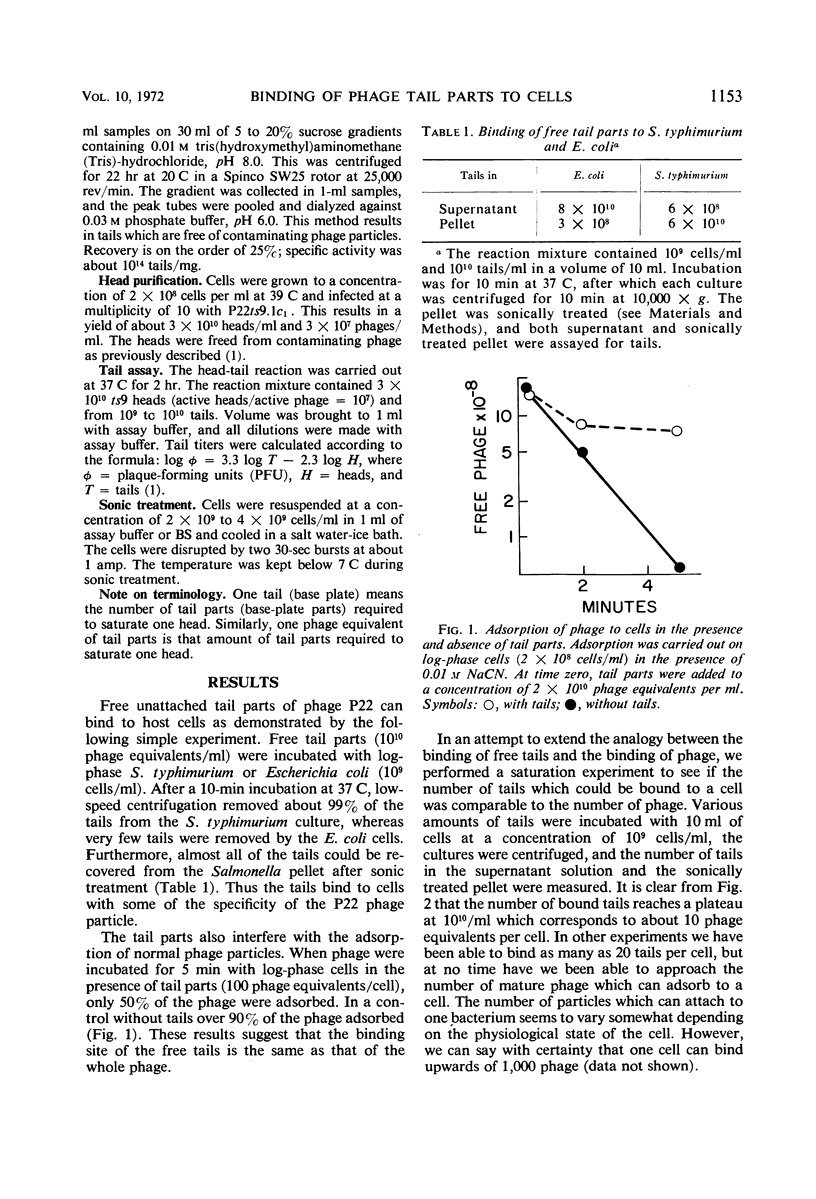Abstract
Purified base-plate parts of bacteriophage P22 can bind to the host cell, Salmonella typhimurium. Although the reaction is reversible, a stable equilibrium is not formed between bound and unbound base-plate parts. This is because the binding sites on the cell, presumably the O antigens, are destroyed. The destruction of binding sites does not kill the cells, and, in fact, the binding sites are soon regenerated. The site-destroying activity reacts with P22 heads to make active phage and with antiserum made against purified phage. Therefore site-destroying activity is a characteristic of the base-plate parts and not some contaminant of the preparation.
Full text
PDF






Selected References
These references are in PubMed. This may not be the complete list of references from this article.
- Israel J. V., Anderson T. F., Levine M. in vitro MORPHOGENESIS OF PHAGE P22 FROM HEADS AND BASE-PLATE PARTS. Proc Natl Acad Sci U S A. 1967 Feb;57(2):284–291. doi: 10.1073/pnas.57.2.284. [DOI] [PMC free article] [PubMed] [Google Scholar]
- LEVINE M. Mutations in the temperate phage P22 and lysogeny in Salmonella. Virology. 1957 Feb;3(1):22–41. doi: 10.1016/0042-6822(57)90021-1. [DOI] [PubMed] [Google Scholar]
- SMITH H. O., LEVINE M. TWO SEQUENTIAL REPRESSIONS OF DNA SYNTHESIS IN THE ESTABLISHMENT OF LYSOGENY BY PHAGE P22 AND ITS MUTANTS. Proc Natl Acad Sci U S A. 1964 Aug;52:356–363. doi: 10.1073/pnas.52.2.356. [DOI] [PMC free article] [PubMed] [Google Scholar]
- Whitfield H. J., Jr, Martin R. G., Ames B. N. Classification of aminotransferase (C gene) mutants in the histidine operon. J Mol Biol. 1966 Nov 14;21(2):335–355. doi: 10.1016/0022-2836(66)90103-3. [DOI] [PubMed] [Google Scholar]
- Wright A., Kanegasaki S. Molecular aspects of lipopolysaccharides. Physiol Rev. 1971 Oct;51(4):748–784. doi: 10.1152/physrev.1971.51.4.748. [DOI] [PubMed] [Google Scholar]
- ZINDER N. D. Lysogenization and superinfection immunity in Salmonella. Virology. 1958 Apr;5(2):291–326. doi: 10.1016/0042-6822(58)90025-4. [DOI] [PubMed] [Google Scholar]


